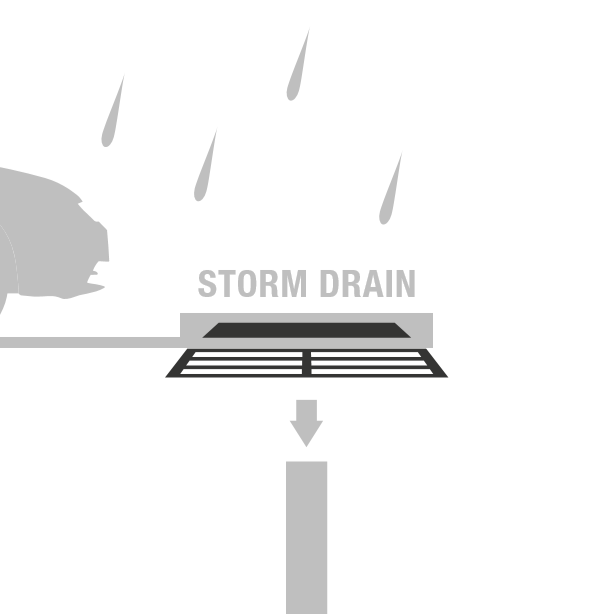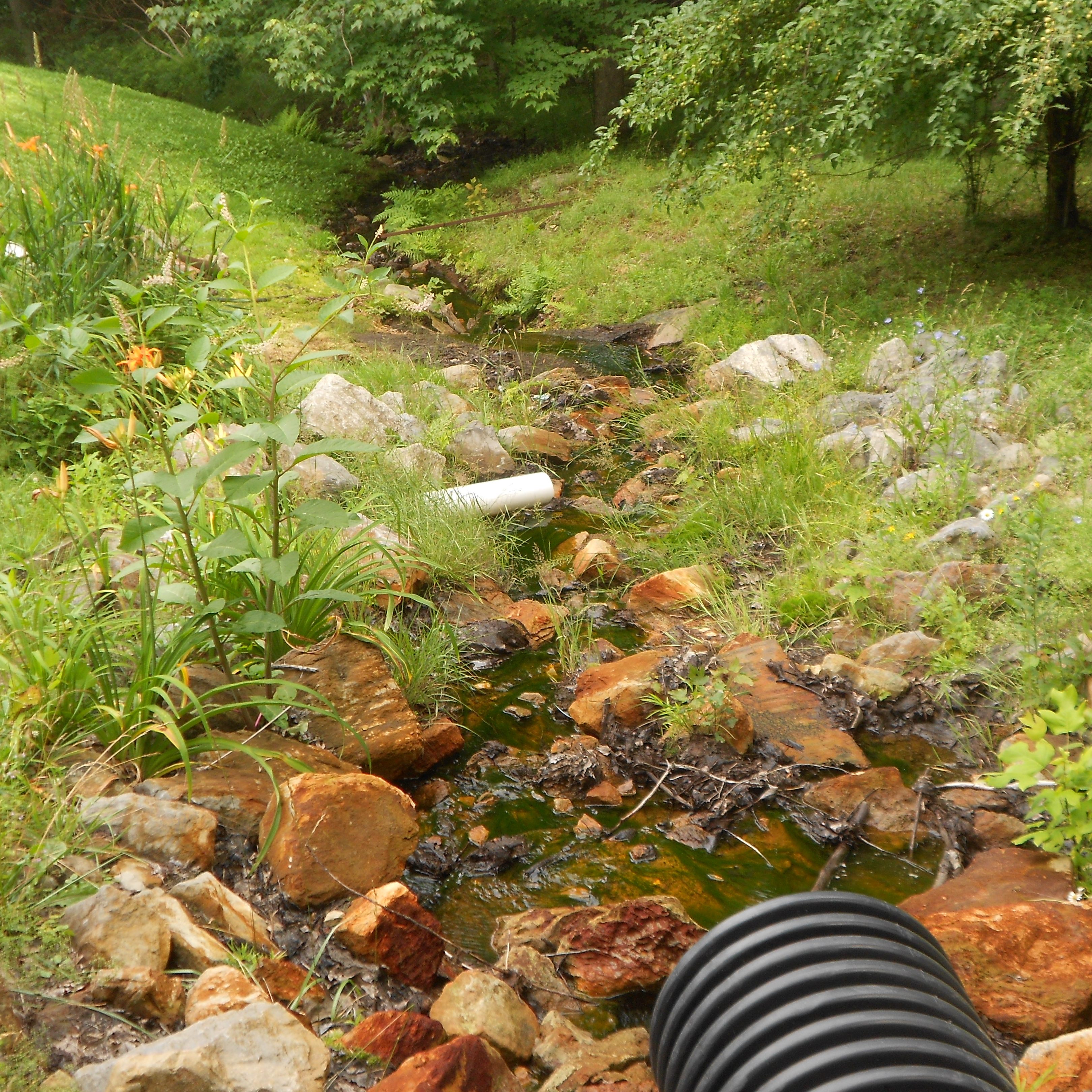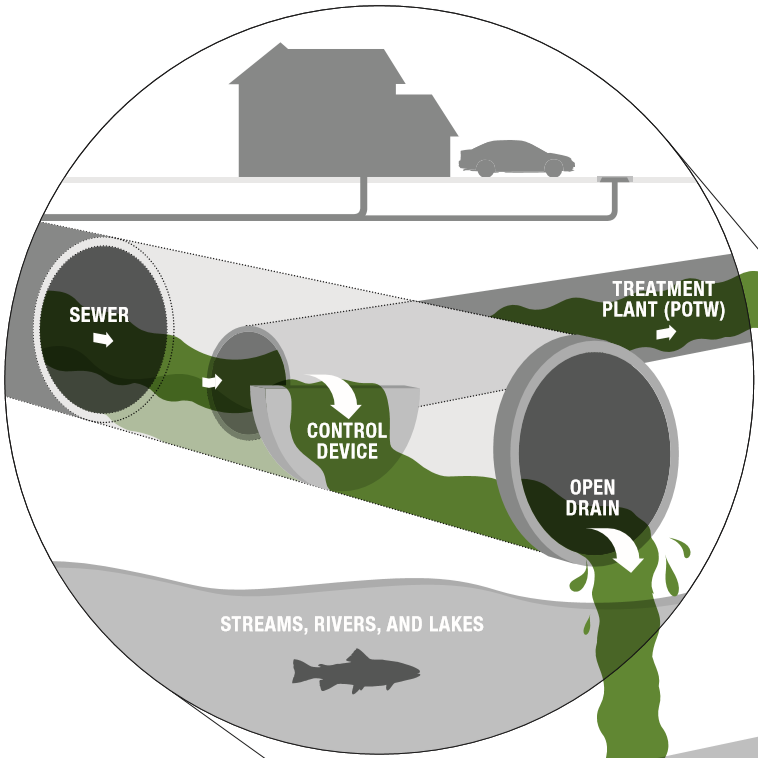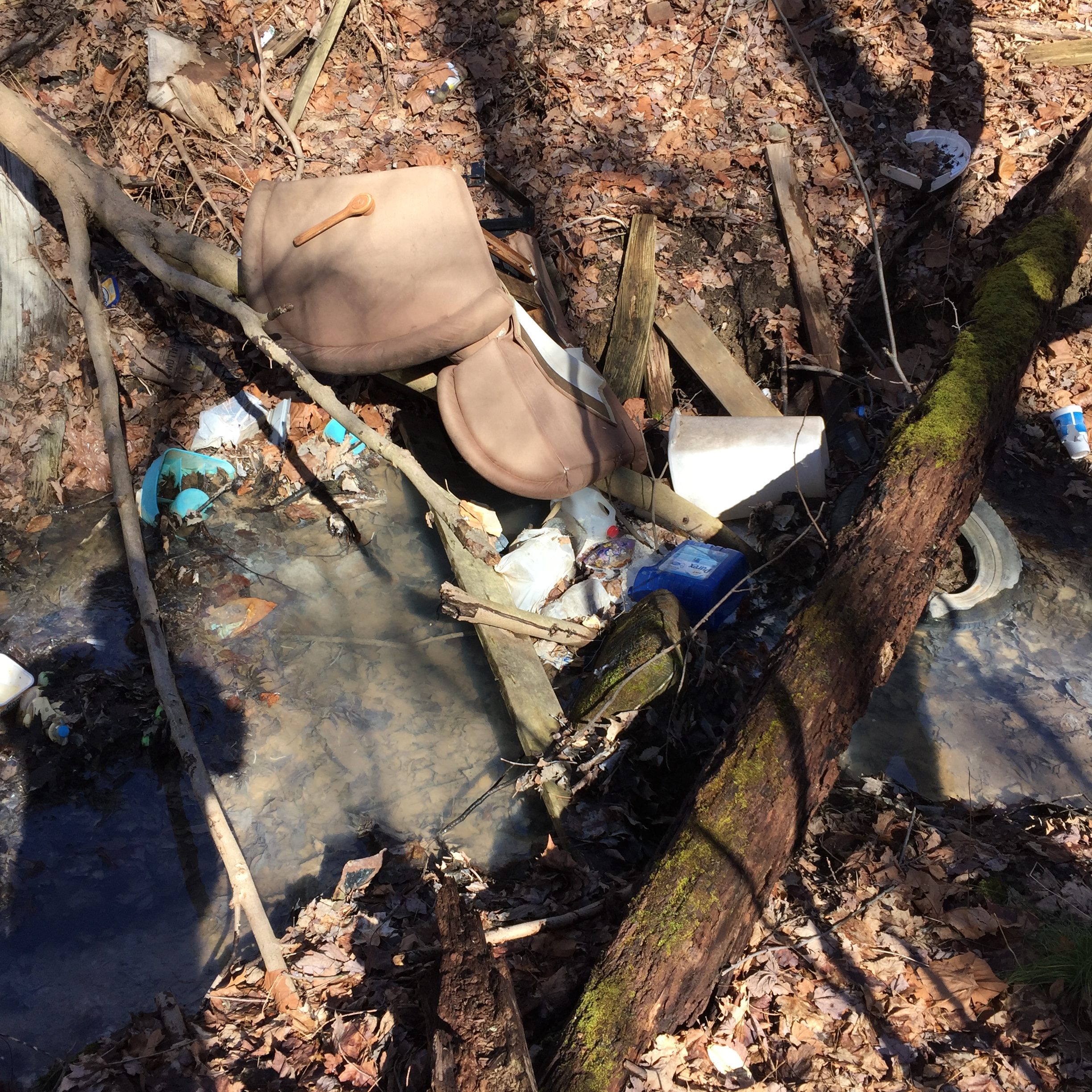Pollutants
Many different sorts of pollutants have eroded Deckers Creek over the years and continue to be a problem today. If you see any of these pollutants around, please report the problem to CreekDog so that appropriate action may be taken.
Acid Mine Drainage
Due to the abundance of mining in the area, acid mine drainage (AMD) is the most common pollutant in the Deckers Creek Watershed. The mining methods used disturb the natural hydrology of the creek, which damages the environment around us. Abandoned mines have been feeding pollutants into our watershed and must be managed and maintained to slow these pollutant inflows.
Mining exposes previously concealed pyrite to both surface water and oxygen. Pyrite is composed of iron and sulfur and, upon exposure to water and oxygen, reacts to form sulfuric acid and dissolved iron. The resulting high acidity (low pH) solution is able to dissolve metals such as iron, aluminum, and manganese that occur in the bedrock surrounding the mined coal bed. This becomes the source of metals dissolved in the creek. As the stream water contaminated with acidity and metals encounters a higher-alkaline environment, acidity is neutralized and the ability to maintain dissolved metals decreases. The resulting solution precipitates its metals, mainly iron-hydroxide, which produces the bright orange precipitate typically associated with AMD. While orange indicates iron-heavy AMD pollution, bright blue or white water is an indicator of aluminum-heavy AMD pollution.
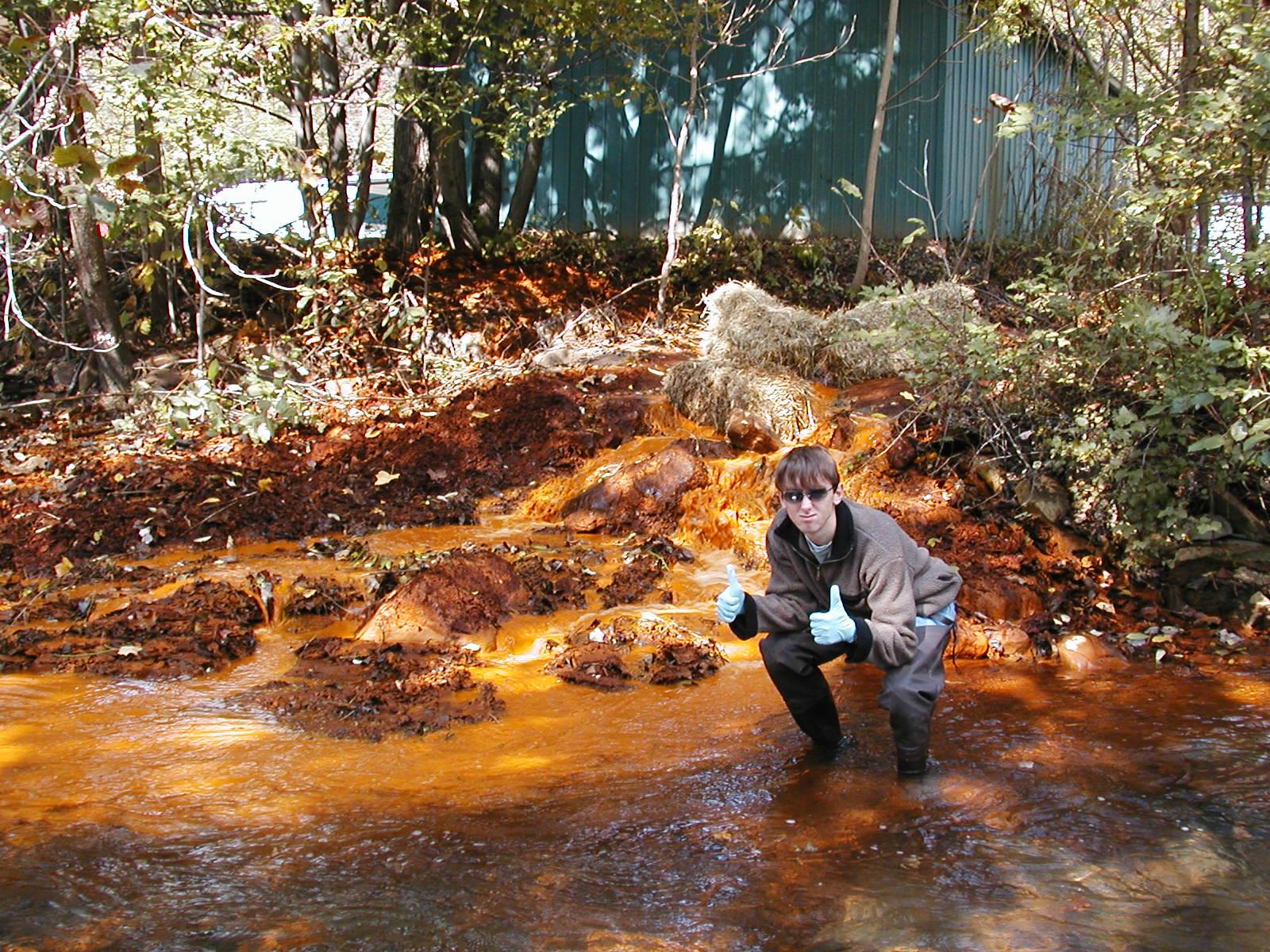
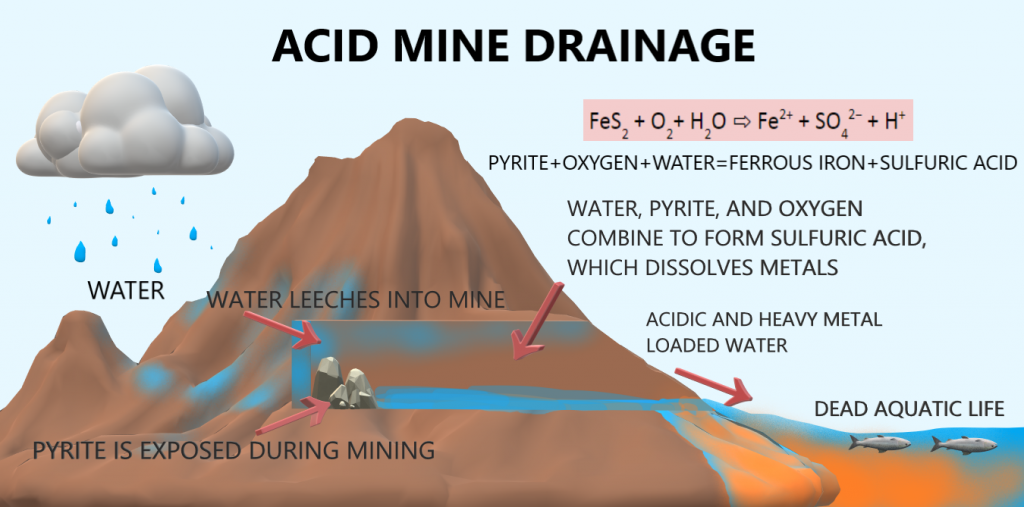
AMD Diagram created by Teagan Kuzniar.
Acidity and dissolved metals in AMD are destructive to aquatic habitats and degrade affected ecosystems. Once the dissolved metals precipitate, the stream bed is coated, which prevents the survival of many types of aquatic organisms, and lessens the food sources that the fish rely on. To learn more about the harmful effects of AMD and how prevalent it's become, view our infographic on the subject, or the Richard Mine Documentary.
Illegal Dumping
The illegal dumping of trash, construction waste, vehicle parts, and other waste items disturbs the stream's natural flow and wildlife habitats. Illegal dumping into Deckers Creek is a common problem, as the people doing it are unaware of the consequences of their accumulated trash.
Since 1995, Friends of Deckers Creek has cleaned up over 66,000 pounds of trash. While small litter is a big problem—tiny plastics and metals routinely disturb wildlife diet and habitats—large appliances, electronics, and machine parts can leach harmful chemicals into the environment. More information about illegal dumping can be found here.
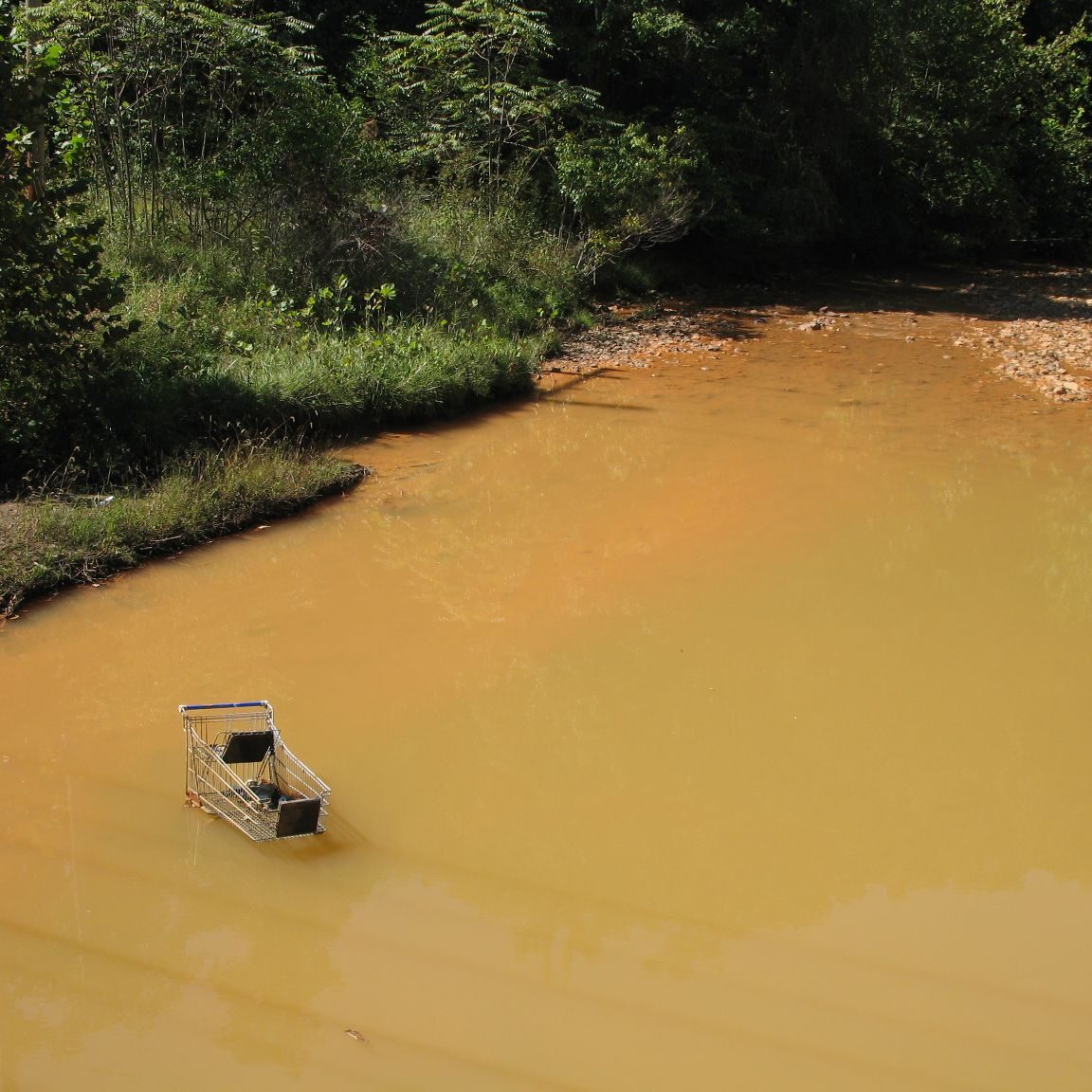
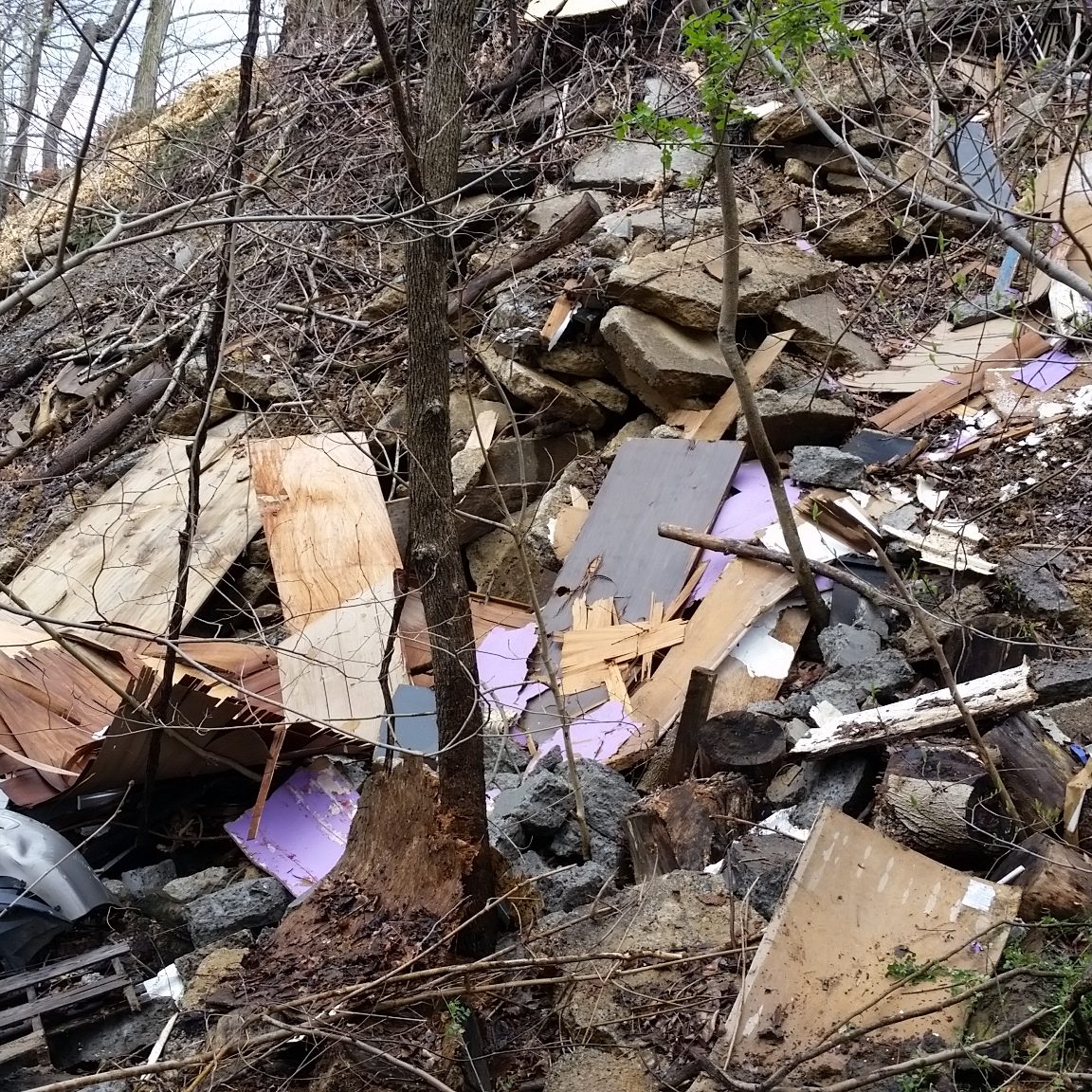
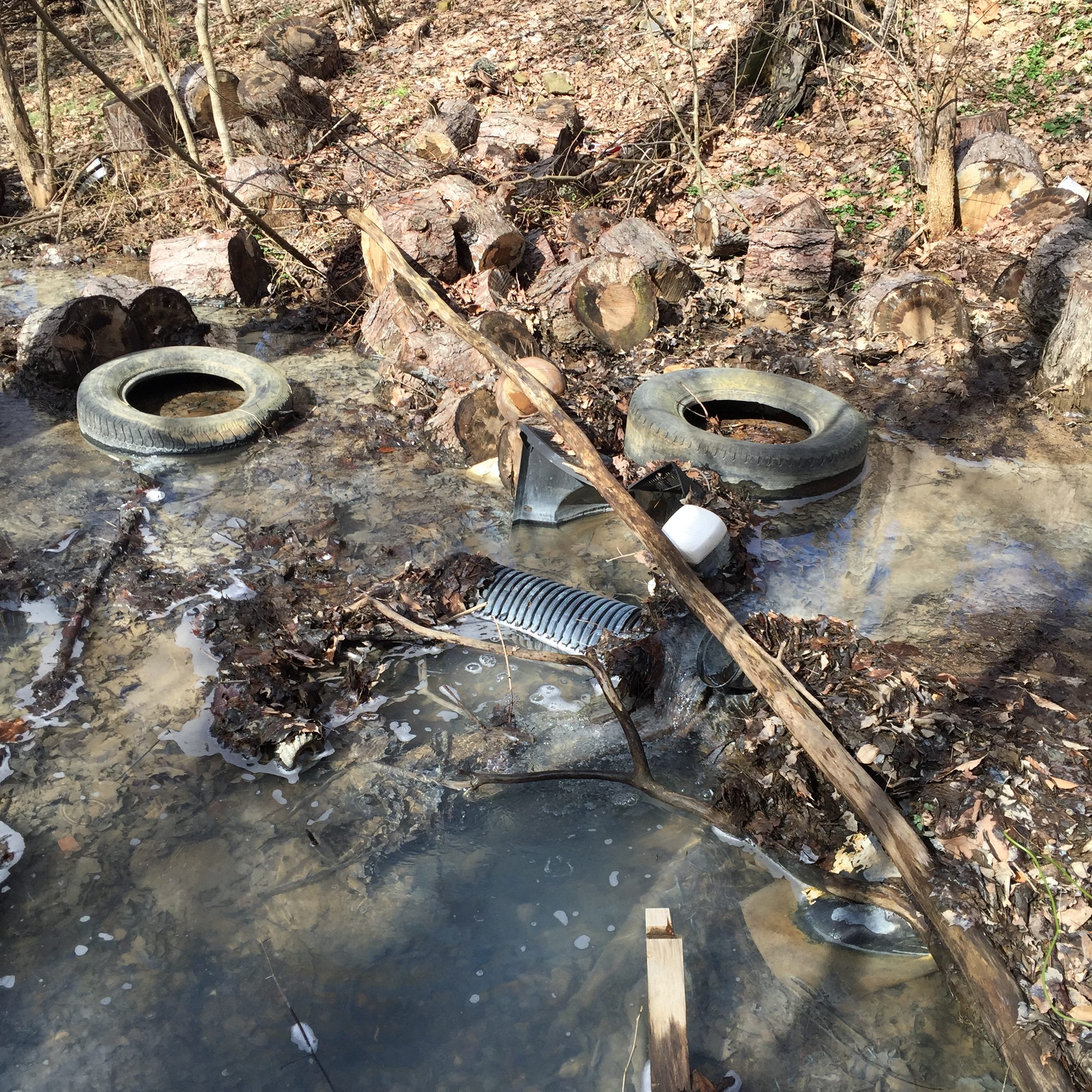

Straight Pipes
Some houses in the Deckers Creek watershed have pipes that run directly to the streams to release their raw sewage into the water. The pollutants that are dumped into the river include fecal coliform bacteria and harmful washing soaps that disturb the natural microbial life in rivers. The bacteria released into the water could promote the overgrowth of algae that, if unmanaged, could harm the fish and the fish's food sources.
While straight piping is illegal due to its negative environmental and health effects, it is still a problem for some houses in the watershed. In some cases, it is expensive to re-pipe the sewage systems in older houses that were built to dump their sewage into the nearest stream. In addition, some people who practice this don't realize the degrading effects this has on their environment. The raw sewage flows downstream, negatively affecting life miles down the stream.
Visit our infographic compiled to educate on the harmful effects of straight piping.
Combined Sewer Overflows
Some sewage collection systems are designed to trap and collect the stormwater runoff that builds up due to the impermeable urban infrastructure of cities. While this sewage collection system is no longer used in newer cities, older communities still rely on the operation of combined sewers.
When stormwater runoff becomes too much and doesn't have a chance to infiltrate into the ground or escape into a stream, the combined sewer system could become exceedingly filled with the stormwater and cause flooding in the city. This can cause serious water pollution problems, as the stormwater runoff is also mixed with collected sewage, and ultimately drained into the stream.
Stormwater Runoff
Stormwater runoff is the mass of water travelling across the ground, carrying with it sediment, nitrogen, and chemicals that it picks up along the way, until it reaches a stream or is absorbed by the ground. The amount of stormwater runoff in urban areas is much more than in forested areas, due to the water's incapability to reach the ground for absorption or plant use. Urban areas are covered with impermeable materials such as asphalt, concrete, and buildings, which only accumulate and redirect the stormwater runoff to increase its erosion on the surrounding environment and cause flooding. Water travelling across these urban surfaces may also pick up harmful chemicals along the way as it travels to the nearest stream. Due to this, stormwater runoff is the most common cause of stream damage in urban areas.
Household Hazardous Waste
Household hazardous waste (HHW) is waste from common household materials and supplies that are rich in harmful chemicals. These substances include products sold for cleaning purposes, personal care, vehicle care, pest control, and house supplies. The chemicals in these substances can be deathly toxic to the environment, especially when polluting our waters and seeping into our soils.
While HHW is not regulated by the Environmental Protection Agency (EPA), many state-sponsored HHW collection programs try to abate the corrosive effects these chemicals have on the local environment. Some state agencies are also becoming increasingly strict in enforcing HHW regulations in retail.


